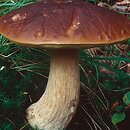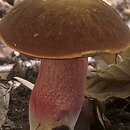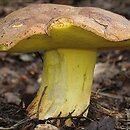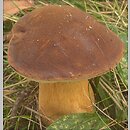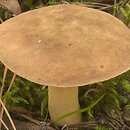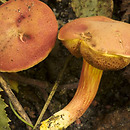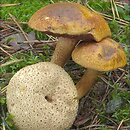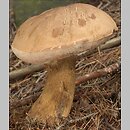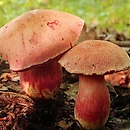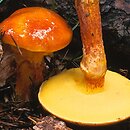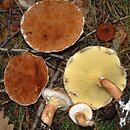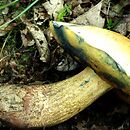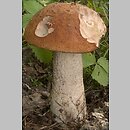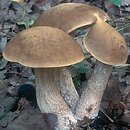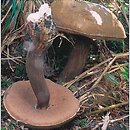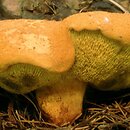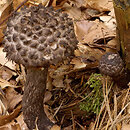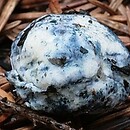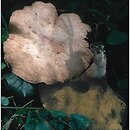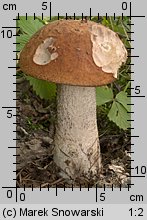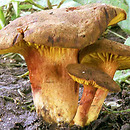
poroblas. żółtoczerw.
Xerocomus pelletieri
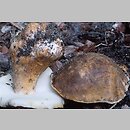
piaskowiec
Gyroporaceae
jadalne czy trujące?
Do borowikowatych należą liczne gatunki najchętniej i najczęściej zbieranych grzyby jadalnych: prawdziwki, podgrzybki, maślaki i koźlarze.

Przy pomyłce w oznaczeniu kapeluszowych grzybów rurkowych rosnących w Polsce, po ich dokładnej obróbce termicznej to jest, po ugotowaniu, usmażeniu lub uduszeniu, nie ma obawy zatrucia. Choć w indywidualnych przypadkach uczulenia lub wrażliwości np. na śluzowate składniki, mogą wystąpić wymioty lub rozwolnienia itp. objawy jelitowo-żołądkowe. Ale to zastrzeżenie dotyczy każdego pokarmu.

oznaczanie
Oznaczając grzyby rurkowe należy zwrócić uwagę na barwę porów w różnym wieku, obecność siateczki, łuseczek, ziarenek, resztek osłony na powierzchni trzonu oraz przebarwianie się miąższu na powierzchni cięcia.


Przedstawiciele rodzaju borowik (Boletus) mają zwykle masywne owocniki ze zgrubiałym trzonem; kapelusz jest suchy, ewentualnie nieco lepki u młodych i w czasie wilgotnej pogody; powierzchnia trzonu często z siateczką lub punkcikami; miąższ u części gatunków niebieszczeje w kontakcie z powietrzem; pory żółte do ciemnoczerwonych; do tego rodzaju zalicza się kilkanaście gatunków.

Imleria badia
podgrzyb brunatny
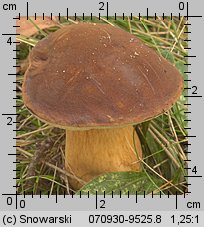
pospolity i wysoko ceniony, większość grzybów sprzedawanych przy drogach to ten gatunek (obok prawdziwka, kurek, zielonek), rośnie w lasach różnego typu, wyróżnia go ciemnobrązowy kapelusz o powierzchni lepkiej w stanie uwilgotnionym, jest nieco podobny do prawdziwka ale ma trzon bez siateczki na powierzchni
common, collected for table, grows in different types of forest; differs from other Xerocomus member with brown, slimy when wet pileus surface, resemble borowik szlachetny (Boletus edulis) but differs with lack of reticulation on stipe surface
Xerocomellus chrysenteron
suchogrzybek złotopory
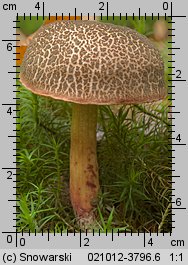
chyba najczęstszy grzyb jadalny w naszych lasach, spotkamy go we wszystkich typach lasów, większość nim pogardza choć moje zdanie jest inne; jest szereg gatunków podobnych do podgrzybka złotawego i nie odróżnianych przez zbieraczy grzybów; typowy charakteryzuje się brązowym kapeluszem, w wieku dojrzałym o spękanej powierzchni i czerwonym zabarwieniem miąższu w miejscach spękań
most common eatable wild mushroom in Polish forests but of low quality, grows in decidious and coniferous woods; there are few species around X. chrysenteron difficult to differentiate, the type is characterised by brown pileus surface, cracked in age with reddish context visible
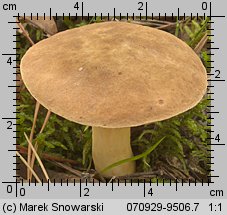
nieczęsty, wyrasta we wszystkich typach lasów, jest cała grupa gatunków podobnych do podgrzybka zajączka i nie odróżnianych przez zbieraczy grzybów; typowy charakteryzuje się mniej lub bardziej oliwkowym zabarwieniem kapelusza i złotożółtymi porami
not common, grows in different types of forests; there is a group of sepecies around X. subtomentosus, difficult to differentiate; the type is characterised by olive tones of pileus surface and golden-yellow pores
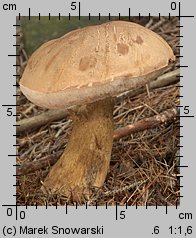
bardzo pospolity; zwany potocznie szatanem, jest łudząco podobny do jasnego prawdziwka, odróżnia się różową barwą rurek, takim też wysypem zarodników, a przede wszystkim bardzo gorzkim smakiem miąższu
very common, it is looks alike of paler forms of borowik szlachetny (Boletus edulis) but differs with rose pores and spore print, its taste is very bitter
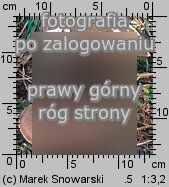
duży grzyb rurkowy rozmiarów prawdziwka; ma ciemnoszare do brudnooliwkowych pory i brązowopurpurowy wysyp zarodników; dość często spotykany na podgórzu
common in mountain forests, has darkg ray to dark olive pores and purple-brown sporeprint
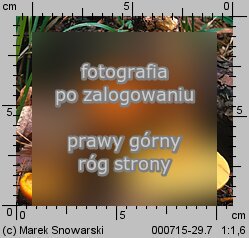
pospolity i chętnie zbierany; rośnie zawsze pod modrzewiem, ma pierścień i żółto zabarwiony lepki kapelusz
common and collected; always under Larix, has ring and yellow wiscid cap
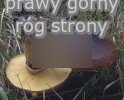
pospolity i często zbierany; zawsze pod sosnami dwuigielnymi, ma pierścień i brązowo zabarwiony lepki kapelusz
common and collected for a table; always under 2-needle pines, has ring and brown viscid cap

nieczęsty, pod sosnami dwuigielnymi, nie ma pierścienia i ma nietypowo dla maślaków suchy kapelusz
not common; under 2-needle pines; lack of ring, got untipical dry cap surface
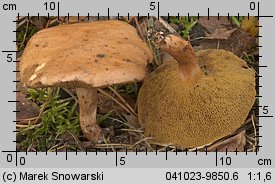
bardzo czesty, ma gąbczasty, elastyczny miąższ nie zachęcający do konsumpcji; pod sosnami, bez pierścienia
very common, because of spongy, elastic flesh not good for table; under 2-needle pines, lack of ring
